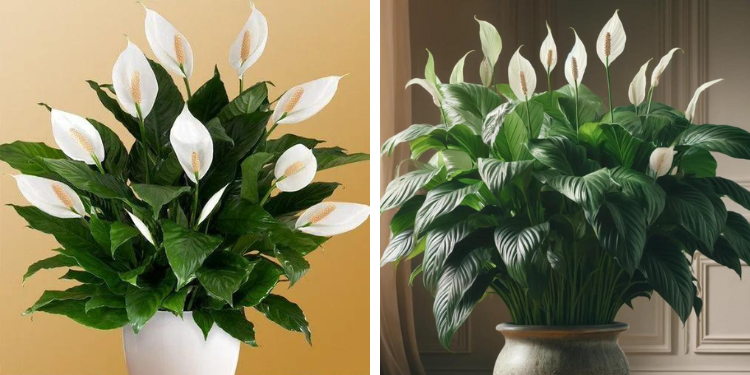Cold drafts or sudden temperature swings can stall their growth. They also crave humidity, so in drier homes it helps to mist the leaves, use a pebble tray, or run a humidifier nearby.
The soil should be rich and well-draining. A mix that contains peat moss, perlite, and bark chips works well because it holds moisture without becoming heavy and compacted.
Repotting every couple of years keeps the roots from becoming crowded, which can also prevent blooms.
Light is another crucial factor. While peace lilies can tolerate low light, they won’t flower there. Place them in bright but indirect sunlight.
If you only have darker rooms, supplement with a grow light for a few hours each day, especially in winter when natural light is weaker.
How to Apply the Blooming Trick
Here’s how you can try my grandmother’s method yourself. Once your peace lily has finished blooming, trim away the spent flower stalks at the base.
For the next month, water less frequently and withhold fertilizer. Allow the plant to rest in bright, indirect light. After this resting period, resume normal care with regular watering, but add a phosphorus-rich fertilizer to the routine.
Keep the plant in a bright spot, maintain humidity, and watch for new flower spikes.
Most peace lilies respond within four to eight weeks, sending up fresh blooms that last for several weeks at a time. Once they fade, cut them off and repeat the cycle.
Common Problems and How to Solve Them
Even with good care, you may run into issues. If your peace lily refuses to bloom, it may simply not be getting enough light.
Move it closer to a window or use artificial lighting. If blooms turn green quickly, it usually means the plant has been overfed, especially with nitrogen.
Cut back on fertilizer. Brown leaf tips often signal fluoride or chlorine in tap water, so try using distilled or rainwater instead.
Root-bound plants also stop blooming. If your plant has roots circling the pot, it’s time to repot into a slightly larger container with fresh soil.
A Seasonal Peace Lily Care Calendar
To make it even easier, here’s how you can care for your peace lily month by month.
Spring: This is bloom season. Keep the plant in bright, indirect light, water regularly, and use a phosphorus-rich fertilizer. Remove faded blooms promptly.
Summer: Growth is strong. Continue feeding monthly with a balanced fertilizer, mist leaves to keep humidity high, and protect from harsh sunlight.
Fall: Let the plant gradually rest. Reduce fertilization and allow the soil to dry slightly between waterings.
Winter: This is the main resting period. Water less, stop feeding, and keep the plant in bright filtered light. After four to six weeks, resume bloom mode to trigger fresh flowers.
Following this cycle mimics the peace lily’s natural environment and maximizes its chances of blooming multiple times a year.
Peace lilies can be tricky if you expect them to bloom without pause, but once you understand their cycles, they’re actually very reliable.
My grandmother’s secret was simply to mimic nature: give the plant a short rest, then provide it with the right light, water, and a bloom-boosting fertilizer.
That gentle rhythm of rest and revival is the true key to success.
